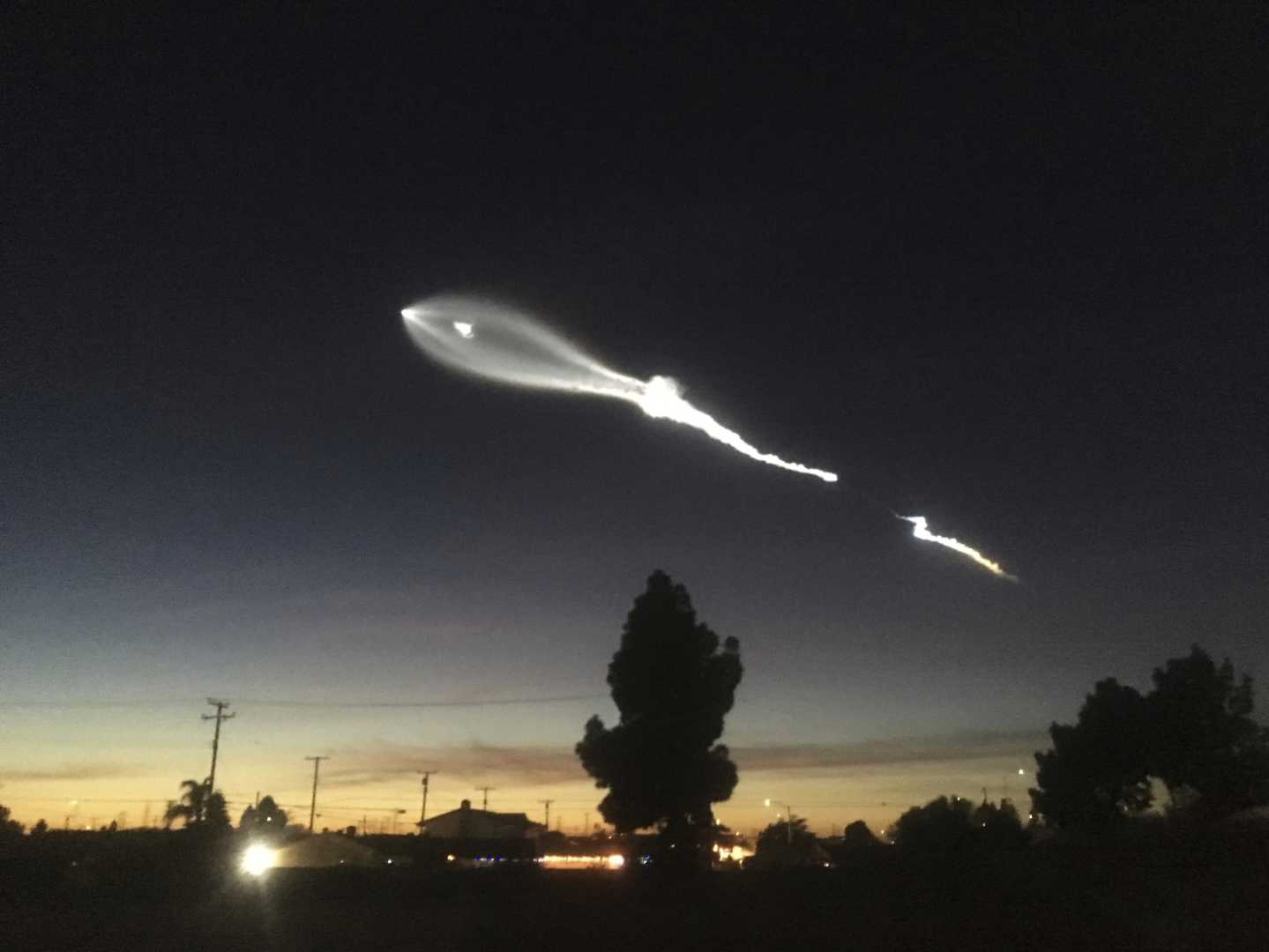Business
SpaceX Launches 23 Starlink Satellites, Illuminates Night Sky Over California

VANDENBERG SPACE FORCE BASE, California – A SpaceX Falcon 9 rocket successfully lifted off on Monday, February 10, 2025, carrying 23 Starlink satellites into low-Earth orbit. The launch took place at 6:09 p.m., captivating onlookers along the West Coast as the rocket’s vibrant trail lit up the night sky.
This latest mission marked SpaceX’s 445th launch and played a vital role in the company’s ongoing efforts to provide high-speed internet connectivity to underserved and remote areas globally. The event drew attention from residents and stargazers, many of whom shared stunning visuals on social media.
Residents across Northern and Southern California reported being awed by the bright rocket trail, with many taking to platforms like Twitter and Instagram to post videos and images, posting, “I thought it was a UFO!”
“It was absolutely breathtaking to see,” said local resident Karen Voight. “I had never witnessed anything like it before. The sky was lit up, and it felt like a dream.”
The Falcon 9’s payload of Starlink satellites is part of SpaceX’s wider goal of creating a satellite constellation that facilitates affordable and reliable internet access worldwide. Each new addition to the constellation aims to bridge the digital divide, particularly in regions with limited or no connectivity.
The Falcon 9 rocket, recognized for its reusability and reliability, can carry payloads of up to 22,800 kilograms to low-Earth orbit. This innovation not only makes space more accessible but also significantly reduces the costs associated with launching satellites.
“With each launch, we are not only advancing technology but also redefining how we interact with the world,” said SpaceX CEO Elon Musk. “Starlink represents a new frontier in global communications.”
Viewers eager to catch a glimpse of the launch were offered prime viewing spots at the Banana Creek Launch Viewing Area, located approximately 6.2 miles from the launch pad. The Kennedy Space Center provided shuttle tours beginning at 10:30 a.m. on launch day, allowing enthusiastic spectators to witness the event firsthand.
Social media buzzed with excitement in the lead-up to the launch, reinforcing the significance of public engagement with space exploration. SpaceX has transformed satellite deployments into thrilling spectacles that open discussions around technology, innovation, and the cosmos.
SpaceX’s extensive satellite launches contribute to the rapidly growing satellite internet market, projected to reach $18.9 billion by 2030, fueled by increasing demand for connectivity.
While the event showcased impressive technological advancements, it also raised concerns regarding light pollution and the environmental impact of space debris associated with the growing number of satellites.
“The increase in satellite launches necessitates a broader conversation on sustainability and the environment,” noted astronomer Dr. Lesley Grace. “As we push for innovation in this field, we need to ensure that we are protecting our environment and the night sky that allows us to explore the universe.”
Despite the challenges, the excitement surrounding SpaceX’s mission highlights humanity’s enduring curiosity and ambition to explore the mysteries of space. As technology continues to evolve, the hope remains that future launches will inspire generations to reach beyond the stars.












